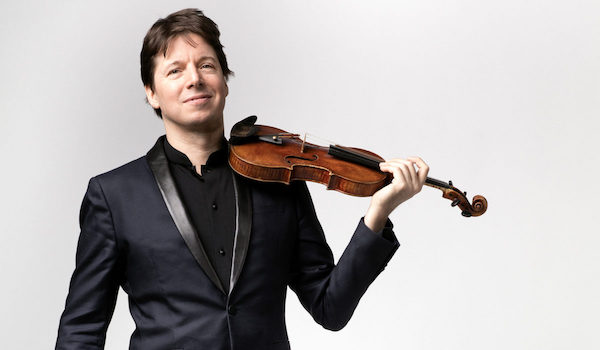Bell’s double-duty makes for wildly mixed results with Dallas Symphony

Over a career now spanning 30-plus years, Joshua Bell has established himself as one of the great violinists of his generation. And like many other fine violinists, such as Pinchas Zuckerman and Leonidas Kavakos, Joshua Bell has decided to turn his hand to conducting.
While many excellent conductors began their careers as violinists, it has become trendy of late for violin soloists to attempt to conduct and play simultaneously. Often this can be ill-advised and occasionally disastrous with works from the mid-19th century and later.
Thursday night Bell and the Dallas Symphony Orchestra tackled a Mozart and Mendelssohn program at Meyerson Symphony Center.
The orchestra opened with Mozart’s Symphony No. 25 in G minor, Joshua Bell playing from the concertmaster’s chair, or rather the concertmaster’s bench. He sat on an artist’s bench that positioned him several inches higher than the rest of the players. This choice probably helped other musicians to see him, but it also created a rather odd visual. And seeing him might not have offered much benefit anyway. This performance was de facto chamber music, the orchestra looking to each other rather than to Bell.
In theory, conductorless Mozart can work. In practice, at least on Thursday, it didn’t. This was some of the messiest playing I’ve ever heard from the Dallas Symphony. Horns had a woefully off night, oboes and bassoons had pitch issues, and balance tended to favor the first violins, unsurprising since Bell is accustomed to performing as a soloist, not blending into a section.
At least the first three movements of Mozart’s symphony conformed to a Classical style; in the fourth, Bell adopted a more Romanticized style, with a few sliding shifts that felt strangely out of place in this repertoire.
Bell then performed the Mendelssohn Concerto in E minor for Violin and Orchestra, serving as both soloist and director. Joshua Bell has performed this concerto hundreds if not thousands of times over his career, so I certainly understand the impulse to mix it up. And he plays a fine rendering of the popular concerto: sweet without being cloying, with pure tone in the upper register and right hand control that is supernaturally subtle. Bell composed his own graceful cadenzas, too, which highlighted the glories of his playing.
But performing this concerto without a conductor poses problems. Normally, a conductor will adjust the orchestra to the soloist’s accelerandos and rubatos. But when Bell speeded up or took some time, the orchestra had to adjust itself, which sometimes took a lurching beat or two. For instance, when Bell took off like a rocket at the end of the first movement, a section that is indeed marked “più presto,” the orchestra scrambled to keep up. It’s hard to imagine this issue would have occurred had there been a conductor. Similarly, in the third movement’s counterpoint, Bell had to adjust to the orchestra’s tempo, rather than the other way around. And adjust he did, but I would rather have heard a version of this concerto in which he wasn’t obligated to do so.
Bell was in the spotlight again for Mozart’s Adagio in E Major for Violin and Orchestra. This is Mozart at his most lyrically beautiful, a perfect match for Bell’s own gifts. He and the orchestra achieved a better rapport here, free of the tempo issues that problematized the Mendelssohn.
The orchestra redeemed itself with the last work on the program, a sparkling performance of one of the happiest works in the repertoire, Mendelssohn’s Symphony No. 4 in A Major, the “Italian.” This symphony requires extraordinarily tight ensemble in difficult passagework, and the Dallas Symphony delivered. Ensemble in strings was at times breathtaking, dynamics were thoughtful, phrasing spirited. Usefully, Bell served as a traditional conductor here, a role he seemed to inhabit competently. The violinist is certainly capable of expanding his repertoire to include conducting. If Thursday’s concert was any indication, though, he should conduct or play, but not both at once.
The program will be repeated 2:30 p.m. Sunday at Meyerson Symphony Center. Bell will also perform the Brahms Violin Concerto in a gala concert with the DSO 8:45 p.m. Saturday. mydso.com


